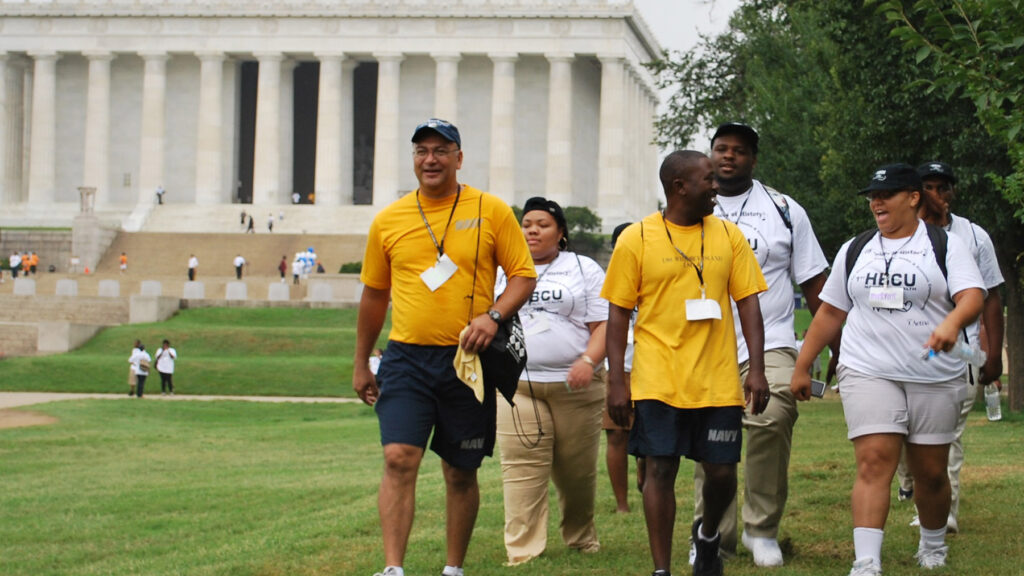Economic mobility and security across successive generations have been inaccessible to Black communities. Even U.S. higher education — the “great equalizer” — does not translate into true advancement for Black households due to the growing debt burden coupled with income and wealth inequality as well as employment discrimination.
Black Americans have historically not been able to operate in the same financial or education system, or with similar opportunities, as others. We were shut out of the mainstream, often paying more for credit at every turn as we were forced to utilize harmful products such as payday loans and subprime mortgages. The effect of this exclusion is the perpetuation of poverty and financial instability, and the creation of a fragile Black middle class that continues to build debt instead of wealth.
Wealth is generally associated with ownership of assets like homes and stocks. For many, mortgage equity is how families navigate and pay for subsequent financial decisions, such as enrolling in higher education. The Black homeownership rate is now stalled at 44%, a level similar to that before the passage of the Fair Housing Act in 1968. Communities of color, already behind in the accumulation of wealth, suffered most in the 2008 financial crisis. Black families lost half of their limited wealth, and they have yet to recover.
The interconnectedness of these processes cannot be ignored. Financial insecurity is often passed down the same way that the privileged pass down wealth and opportunity. For instance, the families who lost the most in the foreclosure crisis were the same families who were denied Parent Plus loans in 2012 when a change was made to the underwriting criteria. The effect was immediate and devastating for Black students, Black families and Black institutions.
Today, as deregulation of the financial sector continues, reverse redlining and predatory inclusion prevail in the market — but this time under the guise of access to credit and innovation. Rather than deregulate these systems and create more avenues for predatory actors, the federal government must fully shoulder its responsibility for addressing these inequities.
Just as it was government policy that kept Black folks out of certain communities and from homeownership, as well as government policy that kept them in under-resourced schools and neighborhoods, government action must now explicitly prevent this and foster meaningful access.
As equity-based, debt-free college proposals percolate, we cannot forget that we are already in the midst of a crisis. Almost 45 million Americans are shouldering $1.5 trillion in student loan debt, and nearly 11% of borrowers are in default. This debt is disproportionately held by Black borrowers, who, because of our history of racial inequality, are more likely to borrow for college, to borrow in higher amounts and to take longer to repay the debt.
Helping Black borrowers requires radical change at both the front and back ends of our system. Specifically, we must do three things: 1) provide relief to the borrowers who are struggling under the weight of their student debt; 2) support Historically Black Colleges and Universities (HBCUs) fully in their mission to educate Black students; and 3) hold for-profit institutions accountable for their outcomes and pricing.
The sheer amount of debt held and the number of individuals holding it pose significant risks to this country’s economic security. Because of this, in addition to reforming the system, we must tackle the debt itself. This requires broad-based debt cancellation of at least $10,000 for all borrowers in repayment.
Even this modest amount of canceled debt would be profound for many borrowers, especially the 29 million whose student loan debt would be completely eliminated by this plan. Further, we must drastically streamline income-based repayment options by collapsing them into one plan that calculates payments based on 8% of discretionary income above 250% of the poverty line, with a repayment period of no more than 15 years.
These two reforms would immediately allow borrowers to make affordable payments on their loans, while protecting enough income for basic expenses and creating more flexibility to build financial stability. While the reforms would have an incredible impact for all borrowers and the overall economy, Black borrowers would especially benefit.
The majority of the Black population resides in just 16 states, most of which are in the South. These states are home not just to large Black populations but also to institutions that have been the bedrock of the Black community for centuries: Black churches and HBCUs.
Solutions targeting these states, which are also some of the poorest in the country, will have a significant impact not only on students who attend local schools, but also on their families and the communities served by these critical institutions. Addressing the Black student debt crisis means investing in and empowering the institutions that will best serve these individuals and communities. Further, existing tools at the federal and state levels can be used to support these institutions, as well as to prevent their reach from being undermined.
For instance, many HBCUs and Black churches are located in low- and middle-income communities that are designated for investment under the Community Reinvestment Act. As federal agencies work to modernize the regulations associated with the act, there is a need for greater transparency and accountability regarding how these private dollars, and the benefits tied to them, actually serve and support the targeted communities and their members.
As local, state and federal leaders and policymakers look to generate investment that will have a significant social impact and positive outcomes, they should embrace and encourage partnerships with Black institutions — especially HBCUs, which have considerable infrastructure needs but have already demonstrated an outsized economic impact in their regions and states. They can incentivize investments that directly support Black institutions through affiliated community development corporations, small community development financial institutions or the like. Moreover, channeling these private funds must be coupled with direct government action to undo the harms resulting from historic and current federal discriminatory policies and practices.
While stronger, better-resourced Black institutions have the potential to directly address the root causes and effects of the Black student debt crisis, failing to properly regulate for-profit colleges has the opposite result. African American students are disproportionately represented at for-profit institutions: 28% of Black students at four-year institutions attend for-profit colleges, compared with just 10% of White students. The high costs of for-profit colleges cause students to rely heavily on loans, while their students tend to have worse education and employment outcomes and higher rates of default. Students of color are particularly at risk, and research has shown that for-profit college students pay more for programs that do little to improve their earnings than their peers at more affordable, high-quality programs in other higher-education sectors.
What’s equally disturbing is the large for-profit college presence in states with sizable Black populations, states with strong, viable alternatives for quality, affordable higher education (see Table 2). Virginia, Florida and Georgia are all home to multiple HBCUs, yet in each of these states the number of Black students attending for-profit colleges dwarfs that of those attending HBCUs.







